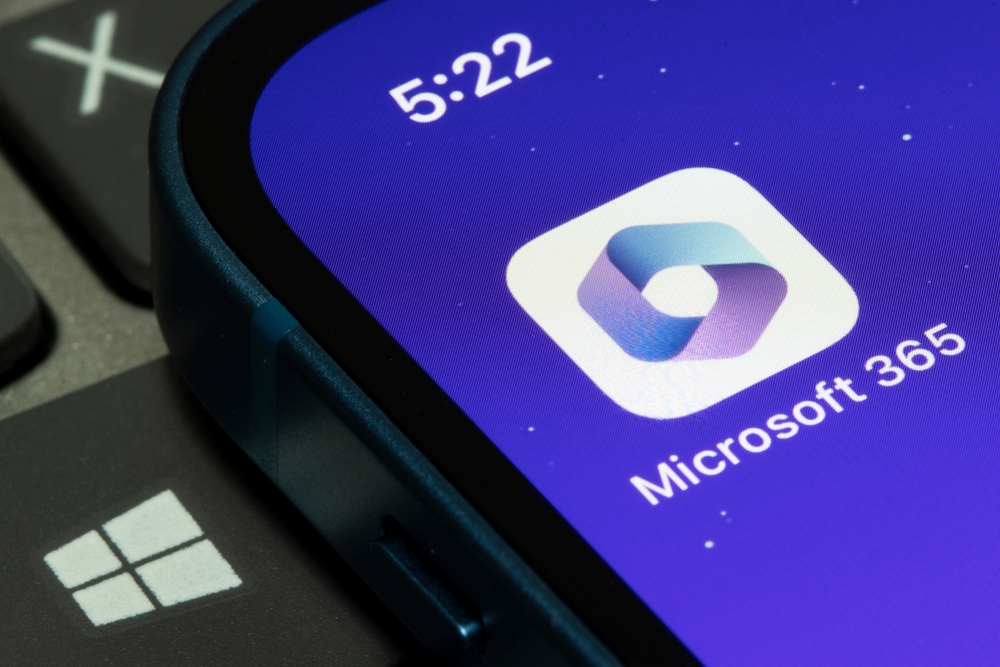Microsoft has vowed to take on the legal burden for any copyright infringements that arise from AI-generated content through its tools, including Copilot.
Copilot is an AI tool that integrates directly into the Microsoft 365 software family, which includes Word, PowerPoint, and Excel.
It’s not yet available to the public but will enable users to automatically create and summarize text, create presentations, create graphs, analyze data, and more.
According to Hossein Nowbar, Microsoft’s general counsel of corporate legal affairs, Microsoft will assume all potential legal risks involved for commercial customers using its AI products, provided they adhere to the built-in “guardrails and content filters.”
In other words, if Copilot produces content that infringes someone else’s copyright and they sue, Microsoft will pay.
The announcement was made in detail via an official Microsoft blog post, which says, “Specifically, if a third party sues a commercial customer for copyright infringement for using Microsoft’s Copilots or the output they generate, we will defend the customer and pay the amount of any adverse judgments or settlements that result from the lawsuit, as long as the customer used the guardrails and content filters we have built into our products.”
Microsoft aims to alleviate fears over the potential of generative AI to unintentionally produce copyrighted material.
Ilanah Fhima, a professor of intellectual property law at University College London, notes, “This move opens up the market” and “makes that software more usable as it removes one of the obstacles for businesses if they know that they have that reassurance.”
This was an unexpected move from Microsoft – vowing to pick up the pieces from customers’ legal battles is something that only makes sense in the age of AI.
Moreover, the stipulation that customers must use the products’ “guardrails and content filters” provides Microsoft with an added layer of protection against misuse.
Ethical concerns and previous backlash
Microsoft’s move raises questions about whether the company intends to foster public trust in its products or simply bolster adoption.
Paying legal fees is one thing, but it doesn’t address whether OpenAI’s training data includes copyrighted content.
Earlier in the year, Abobe Firefly swatted away potential copyright issues by stating the model was trained on Adobe Stock photos only and not data scraped from the internet.
The company made an identical commitment to pay legal fees for any potential legal issues arising from Firefly’s outputs, but that’s a relatively easy commitment for them to make, seeing as they own the training data.
Microsoft can’t offer the same level of transparency despite offering the same legal assurances.
The truth is that disclosing the nature of Copilot’s training data wouldn’t be possible, as it’s built with OpenAI’s GPT models, which were almost certainly trained on at least some copyrighted material obtained through questionable practices.
That’s not to say OpenAI validated creators’ copyrights, but someone did, and OpenAI would have known.
Microsoft’s blog post expresses that the company values copyright and ownership, stating, “It is critical for authors to retain control of their rights under copyright law and earn a healthy return on their creations…and we should ensure that the content needed to train and ground AI models is not locked up in the hands of one or a few companies in ways that would stifle competition and innovation.”
While Copilot is built on ChatGPT, their blog post leads us to believe they’ve equipped it with filters that strictly protect outputs from violating copyrights.
From Microsoft’s wording, these specific guardrails could be unique to Copilot and consist of “classifiers, metaprompts, content filtering, and operational monitoring and abuse detection, including that which potentially infringes third-party content.”
Notably, Microsoft also says the filters “reduce the likelihood that Copilots return infringing content.”
The wording ‘reduce the likelihood’ here implies there is still a *chance* of the tools infringing copyrights despite the filters.
A raft of lawsuits allege that AI tools produce content that too closely resembles copyrighted material, including some verbatim sections of books or summaries that aren’t explicable if ChatGPT didn’t have unfettered access to the books themselves.
OpenAI recently dismissed these cases as ‘baseless,’ though legal proceedings are still ongoing.
Lack of clarity
Currently, there’s no clarity on where OpenAI’s GPT models end, where Copilot starts, and the extent of Microsoft’s fine-tuning.
In another post, Microsoft said, “Copilot doesn’t just connect ChatGPT with Microsoft 365; it combines the power of large language models (LLMs) with your data in the Microsoft Graph (including your calendar, emails, chats, documents, meetings, and more) and the Microsoft 365 apps to turn your words into the most powerful productivity tool on the planet.”
Microsoft released a video explaining how Copilot will work when released, but it doesn’t venture into detail.
For now, we may presume that Microsoft’s new content filters and guardrails aggressively filter potentially copyrighted material, perhaps to a greater extent than ChatGPT. Microsoft might have sanitized Copilot to neuter its use of potentially copyrighted material.
Wider industry implications
Microsoft’s audacious move to shoulder the legal risks of copyright infringement signifies more than just a corporate decision.
As companies are well aware, we’re in the Wild West era of AI regulation. This could be labeled as a calculated risk, but that also implies it’s a gamble.
Since laws and precedents on AI and copyright are still under formation, the company might not be staring down the barrel of exorbitant legal fees – yet.
Global legal dynamics
When Abobe made the same pledge, the company’s general counsel Dana Rao said, “The law is not settled, and I can’t tell you which way the copyright cases are going to go, but I can guarantee you having been born in the United States of America that there are going to be a lot of lawsuits, so that insurance is pretty attractive [to our enterprise customers], and not really a gimmick.”
It’s all well and good to discuss AI copyright as embedded in US legal frameworks, but as a multinational corporation, Microsoft’s policy could set a precedent that has to be navigated in multiple legal jurisdictions, each with its own copyright laws and attitudes toward AI.
This could force Microsoft into a role it might not want: that of a global arbiter setting the de facto standard for how AI copyright issues are handled worldwide.
Suppose Copilot produces a questionable text that resembles someone’s copyrighted work – interpretations of whether the output comprehensively violates copyright law could vary from jurisdiction to jurisdiction.
For instance, UK copyright law differs in several ways from the US. While US copyright law focuses on “fair use,” which is a somewhat flexible standard, the UK relies on a concept called “fair dealing,” which is more limited and has to fit into prescribed categories like research, review, and news reporting.
In the US, an entity may make a claim of “transformative use,” arguing that a new creation adds something new or substantially changes the original work in a way that could exempt it from copyright infringement.
In the UK, however, the lack of a “transformative use” clause makes navigating copyright issues for AI-generated content more challenging, thereby potentially increasing Microsoft’s legal risk when offering its AI products to UK-based clients.
Moreover, the UK’s approach to moral rights — which protects the personal relationship between an author and their work — is more robust than in the US.
If an AI were to substantially replicate a copyrighted work, the UK’s stronger protection of moral rights could add another layer of complexity to Microsoft’s legal calculus.
Hence, Microsoft’s policy could have far-reaching implications in setting a de facto global standard.
This standard would need to be sufficiently flexible to account for the differences between global frameworks yet vigorous enough to offer meaningful protection and assurances to its customers.
Presumably, the pledge will undergo some level of legal underwriting, which may clarify how it’s applied to global customers if, indeed, it has any effect outside of the US.
Lowering barriers for customers, raising them for competitors
Like Abobe, Microsoft is lowering legal barriers to AI adoption in business by pledging to back its customers legally.
However, this move may potentially ripple across the start-up ecosystem. Start-ups, which often drive innovation but lack the financial muscle to assume broad liabilities, may find it increasingly difficult to compete in a marketplace where the heavyweights offer ‘legal insurance’ as part of the package.
There are already concerns that forthcoming AI regulations will be extremely expensive for smaller industry players to comply with.
This could shift the AI development landscape, consolidating power in the hands of those who can afford to take legal risks.
Is this what we want the AI industry to look like? An industry where companies market their products by committing to paying legal fees?
Ethically, this move treads murky waters. While Microsoft claims to value copyrights and even aims to protect them via these guardrails, it’s operating in a space where the ‘right’ path is still being debated.
Additionally, by taking on the legal burden, Microsoft might be seen as bypassing the need for more stringent ethical considerations in AI development and use.
Instead of investing in technology that inherently respects intellectual property rights, the company opts to “clean up” any potential mess afterward.
This could be seen as a form of ethical bartering, where Microsoft is trading the promise of legal support for increased adoption of its services, possibly at the expense of pushing for more ethical AI practices.
Will other companies follow suit? Probably.
Again, this scenario only makes sense in the age of AI.





